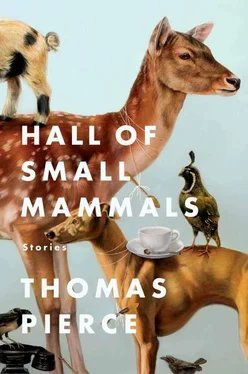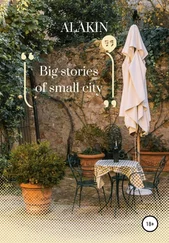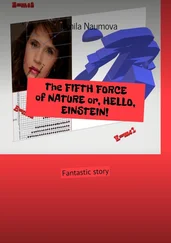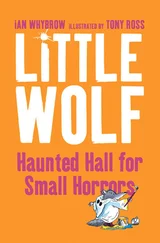When Mrs. Lang knocked on his door for supper that evening, Anders shouted that he wasn’t hungry and was in bed with a headache. Alarmed, Mrs. Lang let herself into the room to make sure that her guest was comfortable. Did he want food brought to him, perhaps? Could she prepare a wet cloth for his forehead? Did he want the windows open or closed? Anders wanted only to be left alone. He wanted to sulk. But Mrs. Lang refused to abandon him in his time of need. “It could be a fever,” she said.
She dragged a chair to the edge of his bed and sat with a book while he pretended to sleep. Afternoon sunlight through the window danced violently, orange and red, inside his lids. When the room went dark, he opened his eyes and discovered that Mrs. Lang, by candlelight, was watching his chest rise and fall.
“I’m feeling better,” he said.
“It was the bones that did this to you.”
“No,” he said, not mentioning the bone under his pillow. “That’s not possible. Sickness comes from the air. From unhealthy vapors. It’s been proven.”
“Was it bad air that killed off the monsters, then? Maybe some of that bad air got trapped down there in its grave.” She grabbed his hand. “Now we’ll all get sick, everyone in town.”
Anders assured her that she was mistaken, that the monster posed no real threat, at least not to her physical health. “If you say so,” Mrs. Lang said. He asked her to retrieve the paper and pen from his bag. When she brought it to him, he thanked her for taking such good care of him. “I’ll be fine,” he said. “You can go to bed now. Really.”
She hesitated at the door but, seeing him put the pen to paper, left the room. Anders was writing a letter to his fiancée. In it, he likened his love for her to a bed of flowers blooming in unison. He wrote that he was her moon, forever loyal in his revolutions.
My trip hasn’t gone as planned, he confessed, finally, and told her of Dubose and the bones and their upcoming unveiling, and of Temp, the girl he mistook for a boy, and then, curiously, of his own misgivings regarding our scientific mission. Some part of me fears, he wrote, that the world as we know it only exists as a set of shared beliefs, which change and grow according to our needs and intellects. Meaning, the world becomes more complex as we do, forever outwitting and confounding us. In the beginning, perhaps all that was needed to sustain us was the idea of a small garden, a plot of land bordered on all sides by nothingness. The earth formed around us as we explored it, the stars burst into light when we looked up. Microorganisms might have only sprouted into being the first time we gazed through a microscope. The sun might have revolved around the earth until the very moment we needed it to be otherwise. Did we dream the fossils into the ground? If enough of us believed it possible, maybe Dubose’s monster would walk right out of the barn and destroy us all. I fear we’re on a wall that can’t be scaled, one we climb with one hand while we build it higher with the other. If that’s the case, we might as well stand back and just paint pictures across the stones — one-eyed monsters, cataclysmic floods, the universe as imagined by a caveman or a carnival barker or a wild-haired prophet.
Forgive me, my darling, he concluded. Perhaps I shouldn’t have been napping with a fossil under my pillow.
His disturbing and faithless letter is stored in our archives to this day along with Dr. Anders’s other personal papers, all willed to our collection at the time of his death.
• • •
The Dubose Brothers Traveling Museum arrived on Saturday morning. Sitting on the front porch of the boardinghouse after his cold bath and simple breakfast, Anders watched people stream into town on foot and on horseback, entire families crammed onto rattling carts. Anders’s ears burned from the cold. Mrs. Lang emerged from the house in a long brown jacket over a frilly apple-green dress.
“Are you sure you won’t join us?” she asked.
Anders had decided to skip the event. “I’ll be fine here. Go ahead.”
Slowly the boardinghouse emptied, and Anders was alone. Across the street the shop had closed its doors for the day. A billy goat with a white sagging neck and two short horns hopscotched down the street and stopped abruptly to consider Anders rocking on the porch. It stepped toward the gate that divided them. But Anders had no scraps for it.
One day, after the next Catastrophe, the town might look like this, empty and abandoned to the billy goats. In his notebook, Anders sketched his own skeleton embedded in the stone beneath the boardinghouse porch. He imagined his gray bones on a pedestal, the identifiable fissures in the right femur that would make him a particularly interesting specimen. If his skull was missing, some future showman would stick some other animal’s head there, a skull disproportionate to his own body, a fox head perhaps, its long, thin, haggard mouth with sharp hanging incisors, eyes on the side of its head. A monster for a brighter age. They’d give him a glittery hide, a demon’s horns.
“Aren’t you going to see it?” It was Temp. She was wearing her dress again. Over her shoulder she carried a bulky burlap sack. It clattered when she dropped it at Anders’s feet. “The rest of the bones,” she said. “If you want them.”
Anders uncinched the top and peered inside. There were probably thirty bones and fragments in the bag, none bigger than his forearm, but still: thirty bones for the Academy’s collection — or maybe even for his own. He took the bag inside and deposited it under his bed. When he came back out onto the porch, buttoning up his coat, he said, “You lead the way. I’m ready to see the monster.” The billy goat skittered away, the bell around its neck clanging, when Temp kicked open the gate and stepped into the street.
What Anders didn’t know was that some of us were already there on the farm, waiting and touring the exhibits.
The Infinity Box, we discovered, was a room full of old fractured mirrors. Inside a wagon lined with puffy red fabric sat Rumpkin the All-Seeing Seer, a man with a long drooping white mustache that he twisted and twisted between his fingers before offering his vague prognoses of life, love, and death. The museum’s Gander of Six-Headed Geese had already flown south for the winter. The caravan curved snakelike through the farmer’s fallow brown fields, and the well-dressed crowds stepped carefully over the rutted earth. The smell of spiced meats and stewed apples wafted over the open land, and people lounged on quilts with their plates and drinks.
At dusk, the World’s Smallest Preacher emerged from the barn. He was three feet tall and dressed in a black robe, his thin dark hair combed neatly. In one hand he gripped a tremendous Bible. When he stepped forward, three bonfires burst into flames, blue, then red and orange. Men wearing Indian headdresses paraded out on white horses. We heard drums and a trumpet fanfare. The World’s Smallest Preacher, his voice strained, yelled out the name Dabney Dubose, and the infamous showman emerged from behind the barn door to massive applause.
“Before Jesus, before Moses, before Noah… a million years ago a monster roamed these ancient forests and devoured any poor animal that crossed its path,” he shouted to an enraptured audience. “It was the scourge of the world! More terrible than a tiger! Bigger than an elephant! Ladies and gentlemen, using the latest scientific methods available, and with the cooperation and approval of a prestigious scientific Academy, we have exhumed and rebuilt the animal. Ladies and gentlemen, for the first time in the history of man, the behemoth returneth!” One barn door creaked open and a line formed. “Have your fifty cents ready, please,” the preacher added, as if it were an afterthought.
Читать дальше












